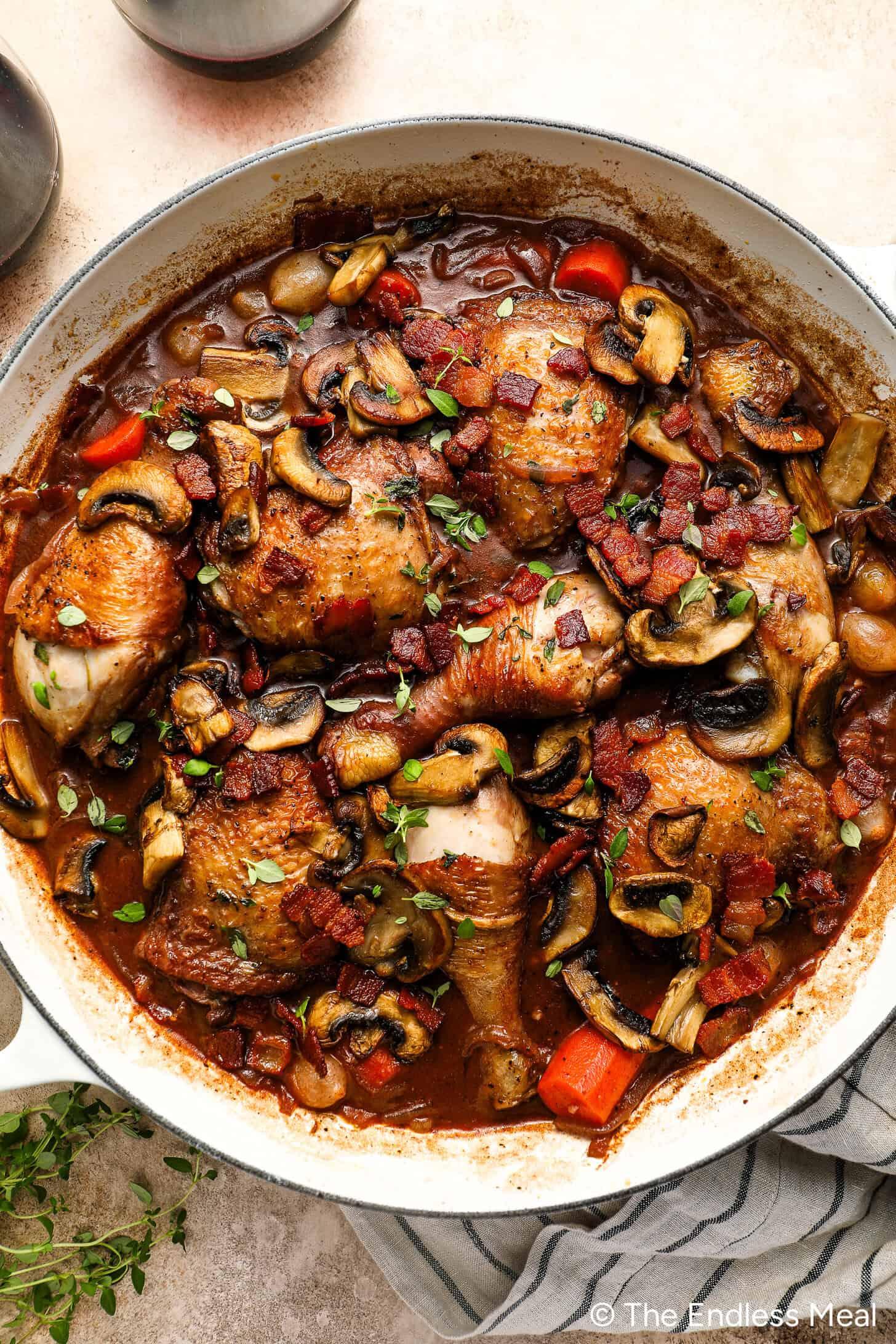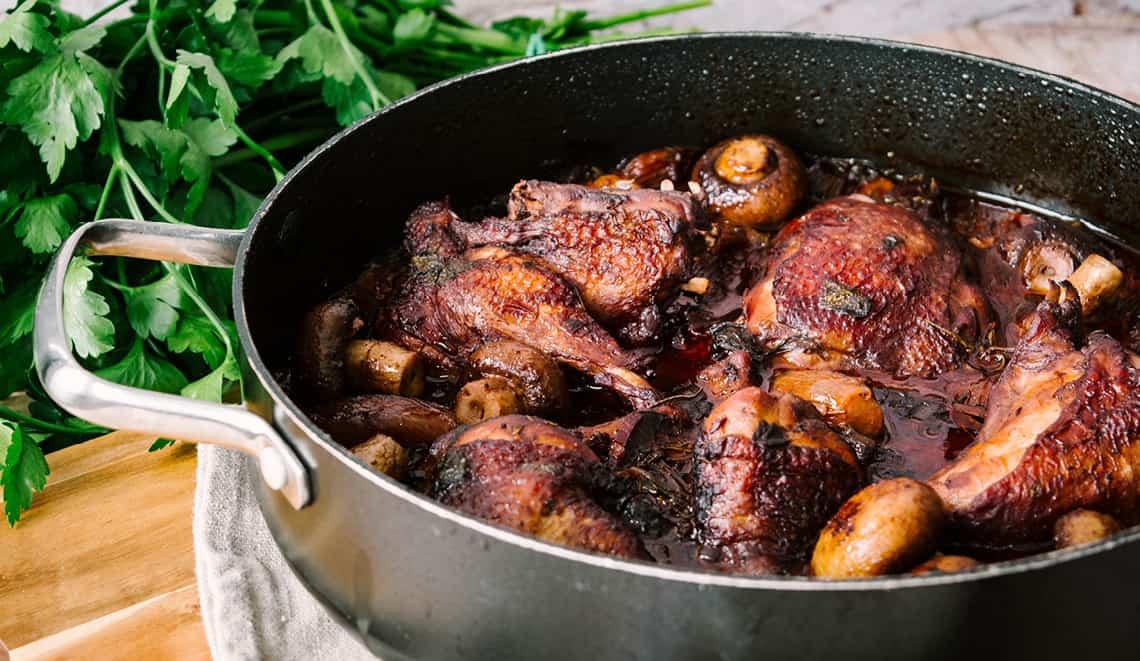In the heart of French cuisine lies a dish that embodies rustic charm and culinary sophistication: Coq au Vin.This timeless classic, steeped in history and rich in flavor, captures the essence of conventional French cooking, where simple ingredients are transformed into remarkable meals. Originating from the pastoral kitchens of Burgundy, coq au Vin marries tender braised chicken with a medley of aromatic herbs, earthy mushrooms, and vibrant vegetables, all enveloped in a velvety red wine sauce. As we embark on a journey through the preparation and significance of this elegant dish, we invite you to savor the art of braising, where patience meets passion, and everyone can experience a taste of France at their table. Whether you are an experienced chef or a curious novice, understanding the nuances of coq au Vin will not only elevate your culinary repertoire but also connect you to the heart of French culinary tradition.
Understanding the Rich history and Tradition of Coq au Vin
Coq au Vin, a classic dish that embodies the essence of rustic French cooking, has roots that trace back to the rural landscapes of France. originating in the regions of Burgundy, this dish boasts a rich history intertwined with the culture and traditions of its people. traditionally made with rooster, the recipe showcases the art of braising, where the meat is slowly cooked in red wine, alongside aromatics like garlic, onions, and mushrooms. This technique not only tenderizes the chicken but also imparts an exquisite depth of flavor, which is a hallmark of French cuisine.
The significance of Coq au Vin extends beyond its culinary appeal; it represents the communal spirit of French dining. Often served during gatherings and celebrations, it embodies the notion of sharing hearty, flavorful meals with loved ones. Some key elements that contribute to the illustrious tradition of this dish include:
- Regional Variations: Different regions have unique spins on the recipe, utilizing local wines and ingredients.
- Historical Significance: The dish has been referenced in various literary works and is a staple in French culinary training.
- Cultural Celebrations: Coq au Vin often graces tables during family gatherings, mirroring the joy of togetherness.

mastering the Art of Ingredients for Authentic Flavor
To achieve the perfect Coq au Vin, one must embrace the richness of its core ingredients. The heart of this dish lies in the quality of the chicken—ideally, free-range or organic—that absorbs the wine and earthy flavors exquisitely. Complementing this are the aromatic vegetables, which include finely chopped onions, carrots, and mushrooms, each bringing a unique depth to the braise. The choice of wine is essential, with a full-bodied red such as a Burgundy or a Côtes du Rhône elevating the dish’s sophistication. Additionally, the inclusion of fresh herbs like thyme and bay leaves imparts aromatic subtleties that linger on the palate, enhancing the overall experience.
Furthermore, the way these ingredients are treated matters significantly. Marinating the chicken overnight in wine and herbs develops a complexity that is hard to replicate. When cooking, the searing process introduces a caramelized flavor that balances beautifully with the wine’s acidity. The integration of bacon or lardons as a savory element ties together the dish and adds a smoky richness. using a careful technique to braise—allowing the dish to simmer gently for hours—ensures that all these elements meld together,revealing layers of authentic flavor in every bite. Below is a summary of essential ingredients and their roles:
| Ingredient | Role in Dish |
|---|---|
| Chicken | Primary protein; absorbs flavors |
| Red Wine | Base flavor; adds acidity and depth |
| Bacon | Provides smokiness and richness |
| Vegetables | Add sweetness and texture |
| Herbs | Aromatic depth and balance |

Step-by-Step Preparation and Cooking Techniques
To create the perfect Coq au Vin, begin by preparing your ingredients with care. Gather your chicken pieces, ensuring they are of high quality, as the meat will absorb the flavors of the braising liquid beautifully. In addition to the chicken, assemble the following essentials:
- Crispy bacon for depth of flavor
- Fresh vegetables such as onions, carrots, and mushrooms
- Garlic for aroma
- Herbs like thyme and bay leaves
- Red wine, preferably something bold and full-bodied
Once your ingredients are ready, the cooking process can commence. Frist, render the bacon in a heavy-bottomed pot until it is golden and crispy, then remove it and set aside. Brown the chicken pieces in the bacon fat until they achieve a lovely crust – this step is crucial for infusing flavor into the dish. After the chicken is browned,add the vegetables and sauté until softened.Then, return the bacon to the pot, sprinkle in the herbs, and pour in the red wine to deglaze, scraping up any flavorful brown bits from the bottom.
| ingredient | amount |
|---|---|
| Chicken (thighs/legs) | 2 lbs |
| Bacon | 4 slices |
| Carrots | 2, chopped |
| Mushrooms | 8 oz, quartered |
| Red wine | 2 cups |
Allow the mixture to simmer gently, letting the wine envelop the chicken. For an extra rich flavor, cover the pot and let it braise on low heat for about one to two hours, enhancing the robustness of each component. As you near completion, taste and adjust seasoning as desired, revealing a harmonious blend of flavors that epitomizes the essence of French cuisine. Serve the Coq au vin with a side of crusty bread or creamy mashed potatoes to soak up the luxurious sauce.

Pairing Suggestions: Complementing Coq au Vin with Wine and Sides
When it comes to enhancing the sumptuous flavors of Coq au Vin, the right wine and side dishes can elevate your dining experience to new heights. A well-chosen wine not only pairs beautifully with the dish but also complements the richness of the braised chicken and its accompanying sauce.For this classic French dish, consider a pinot Noir—its light tannins and notes of red fruit will mirror the dish’s flavors without overwhelming them. Alternatively, a full-bodied red such as a Côtes du Rhône offers a delightful earthiness that will enhance the mushrooms and savory bacon present in the coq au vin. A crisp white like a Chardonnay can also serve as a refreshing counterpoint, especially if you enjoy a lighter touch with your meal.
In addition to wine, the sides you choose to serve can further accentuate the delightful elements of your main dish. Here are some recommendations:
- Garlic Mashed Potatoes – Creamy and indulgent, they soak up the sauce beautifully.
- Crusty Bread – Perfect for mopping up the rich sauce and providing textural contrast.
- Glazed carrots – Their sweetness balances the hearty flavors of the coq au vin.
- Green Beans Almondine – A touch of sophistication, adding a fresh and nutty element.
For those looking to present a traditional French dining setup, consider serving the coq au vin alongside a simple green salad dressed in a tangy vinaigrette. This light course not only cleanses the palate but also prepares the senses for the main event. Here’s an example table illustrating the flavor profiles of different wines you may consider:
| Wine Type | Tasting Notes | Body |
|---|---|---|
| pinot Noir | Red fruits, earthiness | Light to medium |
| Côtes du Rhône | Spices, dark berries | Full |
| Chardonnay | Citrus, oak | Medium to Full |
Future Outlook
As we conclude our culinary journey through the rich tapestry of Coq au Vin, we find ourselves enveloped in the warmth of tradition and the allure of French cuisine. This dish, steeped in history and layered with flavors, invites us to slow down and savor the simple yet profound pleasures of cooking and sharing a meal. The art of braising chicken in wine, along with aromatic vegetables and herbs, transforms humble ingredients into a festivity of taste and culture.
Whether you choose to stick to the classic recipe or infuse your own creative twists, Coq au Vin is more than just a dish; it is an experience that connects us to the past while allowing us to express our culinary creativity in the present. As you gather around the table with family and friends, may each bite remind you of the elegance that lies in tradition and the joy that comes from breaking bread together. Bon appétit!